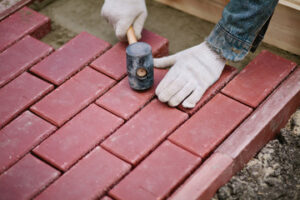Paving Philadelphia is an essential part of keeping your home or business looking its best. A well-paved driveway, walkway, or pathway not only looks great but also helps prevent damage and wear over time.

The paving process involves five key steps to bring the plan to life. This includes demolition and removal of existing surfaces, grading and sloping that allows water to flow off the surface, preparing the sub-base layer, adding the binder layer, and finally installing the asphalt pavement.
Suitable pre-drying is essential to ensure high-quality products and maintain product characteristics. The moisture content of raw materials at harvest time, weather conditions and threshing/shelling systems and machines must be considered to establish the duration and kind of drying process. Insufficient pre-drying can lead to a reduction in the fluidity of the pellets and result in molding defects. DURANEX(r) PBT is hydrolysed by excess moisture and therefore, it requires a sufficiently long pre-drying to obtain good mechanical properties. The logarithmic model fitted best to celeriac slices drying kinetics and the optimum solution was found to be 58 degC drying temperature, 2.9 m/s air velocity, 4.6 mm sample thickness with acid pre-drying treatment.
Pre-Compaction
Soil compaction involves mechanical energy to rearrange soil particles to reduce the void ratio and increase the soil density. It is a key step in construction as it creates a solid foundation for buildings, roads and runways. When performed improperly, however, it can lead to structural failure and unnecessary maintenance costs. This is why it is important to specify the correct amount of compaction and to conduct quality control on site.
Soils are compacted with heavy equipment like rollers, plate compactors, rammers and dozers to prepare them for the construction of foundations, sidewalks and trench work. The best time to perform compaction is when the soil has a high water content, or what is known as optimum moisture content (OMC). The goal is to achieve maximum dry unit weight for the soil with OMC. This can be achieved by using several compaction tests, including sand cone testing and the use of a Shelby Tube or balloon densometer.
When it comes to building concrete, asphalt or gravel roads, pre-compaction helps make them last longer. It also reduces the likelihood of settlement after a road is built, which can cause costly repairs and downtime. Compaction of the soil also prevents plants from growing in the area, which can destabilize the soil over time. In addition, it allows the roads to form in a way that facilitates shedding water.
On a construction project, the amount of compaction required is determined by the size and thickness of the pavement being laid. For thicker mats, more passes are needed, which requires a larger machine with more power and a greater tamping force. To save money and improve productivity, contractors can utilize a plate compactor with an adjustable frequency to regulate the speed at which it travels. This will ensure the compaction process is carried out at a steady rate and that all of the material is compressed evenly.
For smaller jobs, a front-extending screed is used for the paving phase. This is a more efficient alternative to rear-extending screeds as it doesn’t require the operator to manually retract or extend the head of mix when changing paving widths. This means more time can be spent on ensuring the mat is dense and that all of the material is tamped down, which makes for a stronger finish.
Post-Compaction
Soil compaction densifies loose soil, eliminating voids between soil particles and increasing its dry unit weight. It is a key component of construction projects that require a stable base for foundations, roads and other structures. Soil that isn’t compacted properly can be unstable and cause problems down the line, such as undesirable settling of pavement and underground pipes.
A good understanding of how soils are compacted can help project managers make smart decisions about the best equipment and process for each job. It also helps to understand the effects of different conditions on the final outcome of the process. For example, very dry soils can be difficult to compact because the friction between particles makes it difficult to squeeze them together. Conversely, wet soils are more difficult to compact because the water in the pores creates resistance and can prevent forming a dense structure. This is why choosing the right equipment for each type of soil is so important – using the right machine for each situation can dramatically improve the final compaction result.
Once the desired level of compaction is achieved, the resulting material can be used for a variety of purposes. For instance, it can be used in place of gravel to build roads. This helps reduce the cost of the road, as well as the amount of time and effort needed to install it. It also provides a firmer base for small stones than loose gravel would, which in turn can help the roadway last longer. In addition, soil compaction is an important part of building concrete and asphalt roads because it stops plants from growing in the roadway area and destabilizing the surface over time. It is also often used to prepare areas for lawns and golf courses, as it provides a better surface on which to lay greens that can withstand foot traffic.
When it comes to pavement, proper compaction is essential for ensuring that the materials in the construction are tightly locked together. This is what gives the finished product its strength and durability, and it can help to prevent a variety of common road damage problems, such as potholes, cracking and rutting.